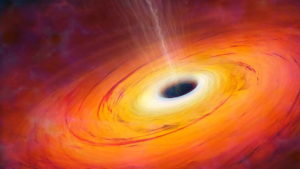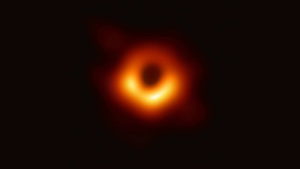The first direct observation of a black hole spinning has been made by researchers and has been providing new insight into the puzzles surrounding these cosmic giants. Space has always been a great interest and an area of incredible research.
The ground-breaking discoveries made about the supermassive black hole at the center of the Messier 87 galaxy, as well as the fascinating insights they offer are opening new chapter of research and further exploration.
Astronomers have made a historic discovery by revealing the first concrete evidence of a black hole in motion and signifying that it is spinning. The spinning is a point of new discovery here.
Years of thorough observations on the black hole at the center of the nearby Messier 87 galaxy, as photographed by the Event Horizon Telescope, have led to this amazing discovery.
Nothing in outer space comes out of nowhere. There is always a huge dedication, team, and hard work behind it with the use of great instruments.
Statistics Related To Black Hole Spinning

Scientists have proven that M87*, the supermassive black hole at the center of the Messier 87 (M87) galaxy, is really rotating. This is a significant finding made public on September 27, 2023, following years of research by a network of radio telescopes. Although the confirmation of its spin is an enormous accomplishment, the exact speed of this cosmic swirl is still unknown.
Event horizon telescope pictures of spin of black holes clearly show this uniqueness.
With their supposedly endless gravitational force and ability to eat anything that comes too close, including light itself, black holes have always captured our attention. Black holes are already mysterious, but the idea that they may spin adds another level of fascination to their existence.
Researchers have been into great discoveries regarding black holes. Though they are mysterious, but interesting and with a lot of secrets to discover.
The gravitational interactions between the spinning black hole, which is thought to be staggeringly 6.5 billion times more massive than our Sun, and the surrounding disk of material are responsible for this rotating movement.

Whether this black hole is spinning or not has been a central concern among scientists after the success of black hole imaging in this galaxy with the Event Horizon Telescope. Currently, uncertainty has replaced anticipation with a spin of black hole.
The enormous black hole in Messier 87 is 55 million light-years from Earth and has a mass 6.5 billion times greater than that of the Sun. An accretion disk, a spinning mass of gas and dust balance supermassive black hole d on the edge of the cosmos’ hole, waits beyond this gravitational giant.
A portion of this material is expelled from the black hole’s poles at speeds greater than 99.99% the speed of light, beginning an extraordinary adventure. Some of it is lost to disappear into the black hole’s depth.

An international network of radio telescopes was utilized to conduct these observations. The jet’s behavior revealed an 11-year cycle that occurred repeatedly, showing that it processed around a core region at the black hole’s edge.
The black hole’s spin axis and the accretion disk were out of alignment, as shown by this precession, which caused the jet to wobble like a spinning top.
To cut a long story short, a better understanding of some of the universe’s most mysterious objects is eased with the discovery of a spinning black hole in the Messier 87 galaxy. We are getting closer to understanding the amazing wonders with this Milestone in Astrophysics. The past two years have been super intelligent and related to space exploration and studies.
With Black Hole spinning, the interest and achievement are further augmented, opening doors of clues and bases of research.













